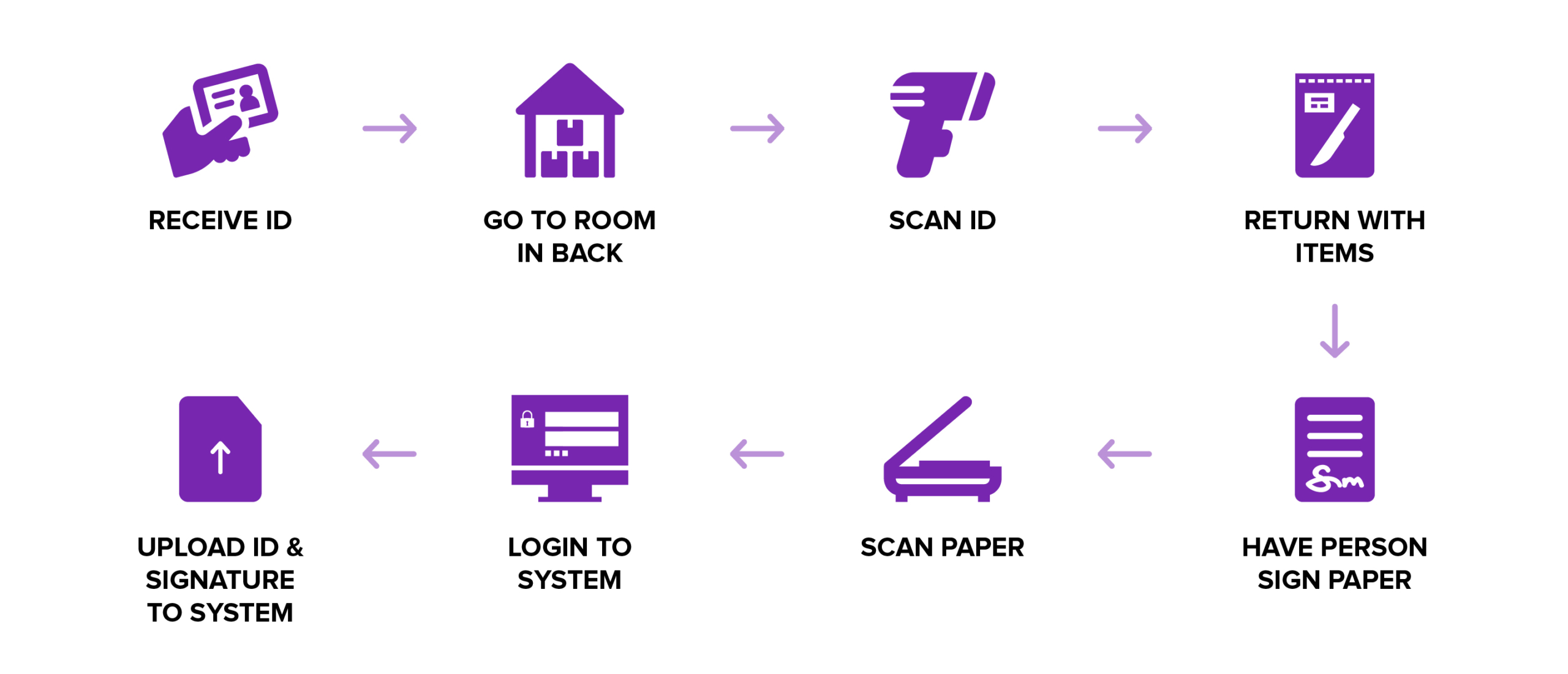
Only four hours into my first research trip at an evidence warehouse it became abundantly clear that these facilities are going through a silent crisis. Prior to my visit, I had seen the research. An August 2012 survey by the International Association of Property & Evidence showed that over half of the 1,000 respondents reported a 75% and above capacity in their warehouses, while almost 70% were taking in 40-80% more items per year than they were able to remove.
Police departments in medium-sized urban areas likely take in around 600 items per month, and the full disposition review process (finding the item, contacting the owner, looking up the case, obtaining approval, and disposition) in most cases takes at least 30 minutes. Each year contains roughly 2,080 work hours. But with roughly 7,200 items to process annually, your department would need to dedicate 2 full-time staff members to do nothing but reviews the entire year to ensure your inventory — and the cost to store that inventory — doesn’t increase. For most cities of these sizes, this task alone requires their entire evidence staff — you see the problem starting to emerge?
As a product manager at Mark43, my goal has been to figure out:
- What are the real pain points of day-to-day evidence management?
- Why did evidence management get to this state? And most importantly,
- How do we build a solution?
Elon Musk frequently references the idea of thinking in terms of ‘first principles,’ or simply, boiling an issue down to its most fundamental truths and working your way up from there. From my visits to large evidence warehouses, small property rooms and everything else inbetween, I was able to uncover seven basic truths that informed our software solution for law enforcement agencies across the United States.
1. Evidence begins in an RMS
A department’s first interaction with evidence begins in a police report. However, officers are typically required to re-enter evidence data into a separate Evidence Management System after making an initial record in their Records Management System (RMS). With this thinking, we determined that these systems should be one in the same. In Mark43 RMS, officers enter information once, eliminating the need for heavy administrative lifting and potentially conflicting records.
2. Evidence disposal requires permission
Some evidence staff explained how they send physical snail mail to the officer (and officer’s supervisor) in charge of the case in order to request permission to release the evidence. Based on anecdotal conversations, staff received a 20% response rate using this method, with no way to confirm if the person ever received it. This ineffective process is why we created an automated review system that seamlessly pushes disposition reviews to the decision-makers rather than forcing evidence staff to start a process with no sign of completion.
3. All item movement must be accounted for
Without a complete chain of custody (CoC), an item risks getting thrown out of court because the integrity of the evidence can no longer be trusted. (This is exactly what happened in the OJ Simpson, Ryan Braun and JonBenet Ramsey cases.) However, the largely paper-heavy processes at most departments don’t exactly inspire trust in the CoC. Taking this process digital (and mobile) means that evidence staff have confidence removing items that are past the statute of limitations and no longer required for court.
4. Evidence staff often handle items in bulk
Evidence staff spend most of their time taking in evidence, moving it around in a warehouse, and releasing it. Due to the the high costs of disposing of drugs, one department’s evidence staff waits until they have a sizable amount ready for disposal before burning them all at once. In doing so, they experience the frustration of wanting to simultaneously change the status of the 100 pieces of drug evidence at once, but realizing their system isn’t capable. Mark43 uses an online shopping cart approach where you can add as many items as you need and then update their status all at once.
5. Evidence staff are away from a computer a lot
In watching evidence clerks move around a warehouse, I observed how most of the job is away from their desk. However, traditional evidence scanners don’t display information about the items they scan; instead the information is displayed on computers. As such, a clerk needs to scan an item, walk to the computer, check the information, and repeat that process for every item to be sure they have selected the correct item. Providing a way to access information on the go saves time taking laps between the desktop computer and the contents of the package. This is why we designed our evidence product to include a mobile component.
6. Signatures and IDs are collected frequently
Signatures and IDs must be collected as proof that civilians picked up their items. Otherwise, item owners could sue the police department stating they never received their items. A typical process looks like this:

This seemingly small process can actually take up a large amount of time. Using a mobile application, we have cut this 8-step process in half, allowing evidence staff to collect ID and signatures directly on their phone and into the RMS.
7. Inventory stats aren’t readily accessible
An evidence sergeant once shared the struggle his team faces in pulling evidence reports connected to cases attributed to specific officers. He explained that his system left him no other choice than to look through thousands of notes and evidence masters to pull the report. In addition, he also needed to pull general reports on the number of items they had taken in for any given time period, and how many of those items belonged to each evidence category. We designed an inventory dashboard with filters so questions are answered in seconds without a multi-step report.
Building excellent software requires an equally excellent understanding of the fundamental truths behind the user’s pain points. Without an understanding of these truths, software vendors are allowing evidence warehouses to fall prey to the silent crisis of repetitive workflows, shrinking storage space, and increased costs. The journey has only just begun for the team at Mark43, yet I’m confident that thoughtfully-built technology can create a better experience for anyone interacting with evidence.
Do these basic truths sound familiar? You’ll want to watch our recorded presentation from the recent California Association for Property & Evidence Training Seminar to see Mark43’s solution in action.




